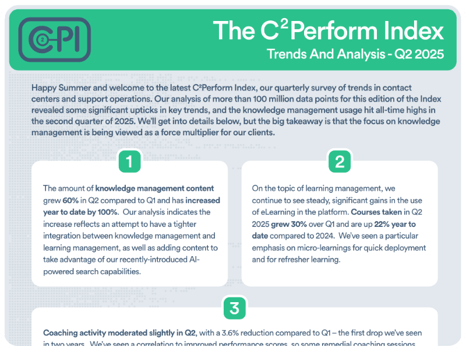Voluntary employee turnover can have a major impact on any kind of business. The specific cost of replacing an individual employee varies depending on industry and role. However, the price tag of employee turnover easily exceeds thousands of dollars. Estimates from Gallup put the annual cost of voluntary turnover in U.S. businesses at $1 trillion per year.
One effective solution for improving employee retention is by using employee coaching sessions. Coaching can help guide teams and drive engagement with work. Increased engagement rates among workers lead to a reduction in turnover, increased productivity, and higher customer loyalty.
How can coaching sessions affect employee engagement? More importantly, what can you do to make coaching sessions more effective at reducing turnover? Continue reading to learn more.
How to Improve Employee Retention with Coaching
Can coaching truly improve employee engagement and workforce retention? Betterup.com notes that employees who thrive with coaching are more resilient and satisfied and lead more productive teams.
However, the impact of coaching on employee engagement is often indirect. Employees don’t just sit down with their managers for five minutes and come out of the meeting feeling better. Instead, the increased engagement some employees display may be a byproduct of the other benefits of employee coaching.
For example, according to the McLean Institute of Coaching, over 70% of those who receive coaching report:
- More self-confidence
- Better work performance
- Better relationships
- More effective communication skills
This combination of benefits helps an employee feel more engaged with and satisfied by their work. As a result, they are less likely to leave a company on their own.
Employee Retention Strategies Through Coaching for Engagement
Many elements of an effective coaching session go beyond training or basic knowledge management, like:
- Collecting Employee Feedback.
High effective coaches often privately ask employees what they think about their work environment, processes, and coworkers. This can help leadership identify potential issues that may be impacting employee morale.
- Recognizing Employee Achievements.
When employees go above and beyond to produce results, providing a little recognition can go a long way. Finding ways to incorporate congratulations for employees can help create a positive feedback loop. The employee works hard to gain recognition, achieves great results, and continues to work hard for praise.
- Providing a Safe Place to Practice Skills.
If an employee is struggling with exercising a particular skill, coaching sessions can be a great chance for practice. They can take their time with the skill in a safe environment free from consequences. This can build employee confidence and demonstrate support for the employee.
- Connecting Job Activities to Results or a Mission.
Managers should the employee’s work to real-world results, the company’s mission, or the employee’s values. This can help to keep employees motivated and engaged by showing them that what they do has value.
Get the Right Employee Engagement and Retention Tools
Coaching employees isn’t always easy. This is especially true if you don’t have the right tools. As a manager, you’ll have to quickly communicate, assess performance, and identify room for improvement.
Get access to a dynamic coaching platform that combines performance tracking, team communication, learning management, and more. You can consult our platform for all your performance management needs. Reach out to C2Perform today to begin!
 English
English Español
Español





.png?height=350&name=Untitled%20(300%20x%20175%20px).png)



